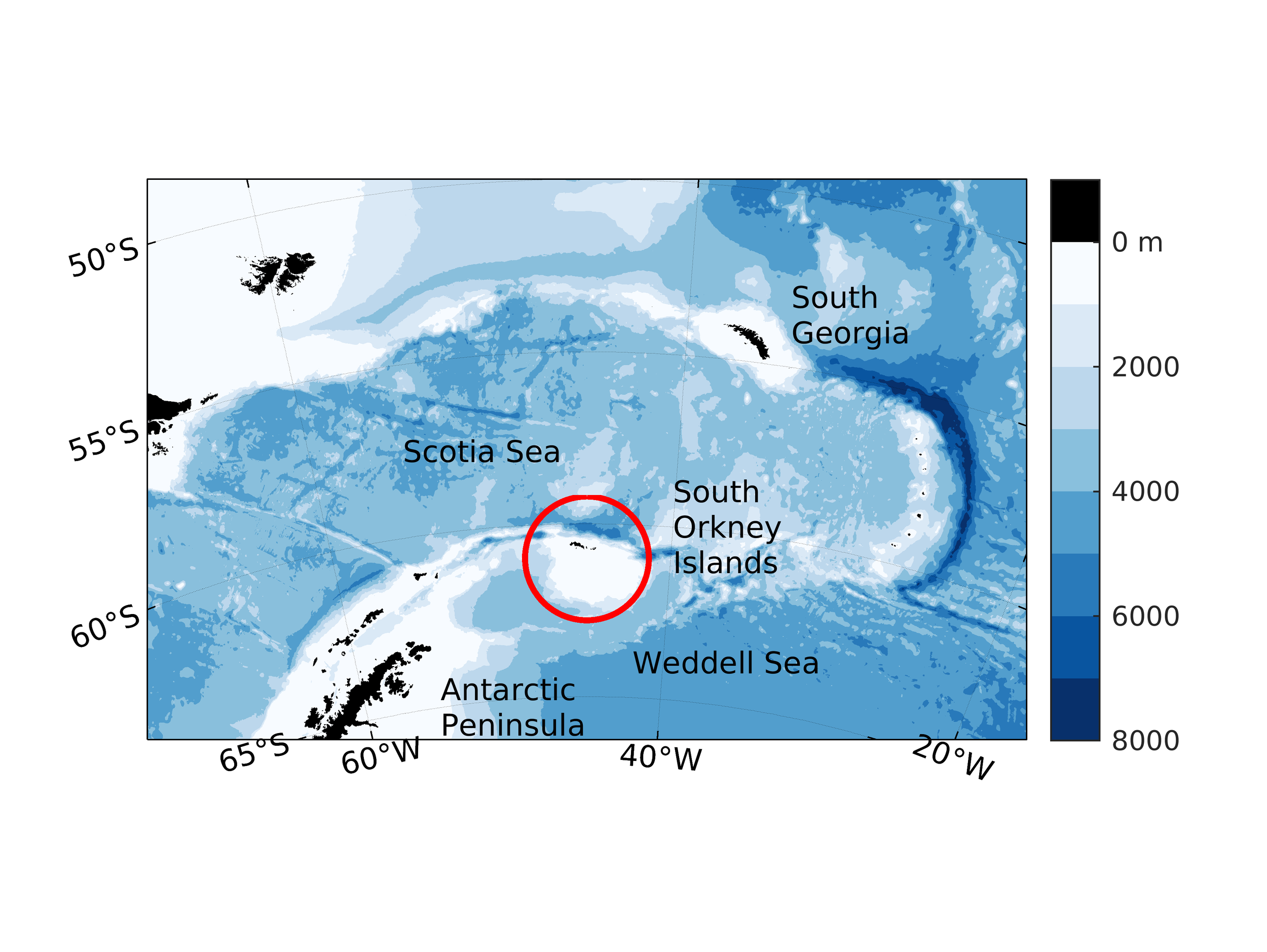An newly completed AWR funded research project by Sally Thorpe, British Antarctic Survey, provides greater understanding of the movement of krill into, and within, the South Orkneys region, and may aid management of the krill fishery
The South Orkney Islands region is a key area for Antarctic krill. Consistently high densities of krill support a variety of krill-eating predators, such as penguins and seals, and are targeted by krill fishing operations, so it is essential to understand what affects the distribution of krill in this region.
Thorpe and colleagues did this using a number of model studies. Models enable them to simulate the transport of krill by ocean currents, and by including some basic behaviour strategies of krill in the model, namely diel vertical migration and the use of the sea ice habitat, we can see how the patterns of movement are affected by krill behaviour. There is large variability in the physical environment in this region – in the ocean currents and the seasonal distribution of sea ice – and the model studies allowed us to investigate the impact that this variability has on the movement of krill.
The research has given a better understanding of what determines the distribution of krill around the South Orkneys.
We now know more about the variability in the transport of krill to the South Orkneys region and the impact that the behaviour strategies of krill can have on this. Krill that spend time in close association with the sea ice, either for feeding or refuge from predators for example, have different transport pathways than krill that don’t spend time close to the sea ice.
We also now have a greater knowledge of the processes that bring krill onto the South Orkney plateau, and the movement and retention of krill on the plateau, with the model results suggesting that the local transport and retention of krill are strongly influenced by winds over the South Orkneys region.
Acknowledgements
Funding by the Antarctic Wildlife Research Fundfor ‘Modelling the Movement of Antarctic Krill: the importance of retention, dispersal and behaviour for krill distribution’ was awarded to Sally Thorpe, Emma Young, Eugene Murphy (all British Antarctic Survey, UK), Olav Rune Godø and Angelika Renner (both Institute of Marine Research, Norway).
Modelling studies were performed on the British Antarctic Survey high performance computing facilities. The krill movement models used output from the NEMO 1/12° ocean-sea ice model, made available by the National Oceanography Centre, Southampton, and from a fine-scale South Orkneys regional model developed by Emma Young that was funded by the UK Foreign and Commonwealth Office and the Natural Environment Research Council, and was run on the UK supercomputing facility, ARCHER.
Antarctic krill Euphausia superba can live for up to 5 years and grow to 6 cm in length. Image: Simon Wright, British Antarctic Survey
Map of the South Orkney Islands region.The colour scale shows the depth of the ocean from the GEBCO 2014 global dataset. Image: Sally Thorpe, British Antarctic Survey
How many model krill does it take to examine the movement of krill in the South Orkney Islands region?The answer, at least in our model study, is a lot – we simulated the movement of over 21 million krill for this project. Image: Sally Thorpe, Emma Young, British Antarctic Survey




